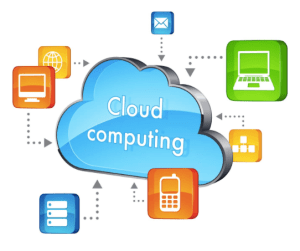[vc_row][vc_column width=”1/1″][vc_row_inner][vc_column_inner][vc_column_text]The flexibility in usage is one of the greatest assets of cloud computing. But the breadth of available uses for the cloud also lends itself to confusion about exactly which functions the cloud can support.
So what are some of the most frequent uses of cloud computing? We’ve compiled a list of 6 ways to leverage the power of cloud computing. As one of the significant advantages to cloud computing is scalability, you can start small to assess the viability of the solution for your organization, and then quickly scale up if it meets your needs. Just make sure you have a strategy – no matter how small your initial test – otherwise you might find you’ve overlooked a critical component, such as security.
1. Infrastructure-as-a-service
IaaS allows your company to virtualize your computing infrastructure. While perhaps not as exciting as some other cloud uses, IaaS is often a cost-effective and easily scalable solution that reduces the investment you will need to make in physical hardware, making it an attractive option for almost any company. This is a great place to start if you want to use the cloud to reduce IT and capital costs.
2. Testing and Development (Platform-as-a-service)
Using a cloud environment to develop applications is often a far more practical option than constantly acquiring and installing new hardware and software. With PaaS your developers can simply log-in and access the full-suite of tools needed to create the next great application. And with the wealth of PaaS options available, you can have anything from a just-the-bare-bones set-up, to all the bells-and-whistles you can find.
3. Applications (Software-as-a-service)
Not surprisingly this is one of the most popular ways to leverage the cloud. According to IBM, as of June 2014, 21 percent of the software companies use today is delivered through SaaS, and that number is expected to more than double in the next 5 years. SaaS can serve as a delivery model for an endless array of business applications including email, CRM, ERP, HR management, etc. SaaS has grown explosively in the last 5 years, largely because it allows companies to take advantage of economies of scale and reduce the cost of hosting applications. If you want to take advantage of the cloud specifically to reduce costs, start here.
4. Disaster recovery
In the tech age, no company can afford to have critical IT systems off line for long. Cloud-based disaster recovery ensures faster disaster recovery during those critical moments. Cloud-based disaster recovery also gives you the ability to store your business continuity plans off-site, so you can access them from anywhere in the event of an emergency.
5. File storage
Do you use Google Drive? Or Dropbox? Then you’re already leveraging the cloud for file storage! This is another great gateway into cloud computing, as most of us have already been exposed to a cloud-based file storage environment. Instead of taking up the often limited space on your hard-drive, just store your files in the cloud. A number of additional benefits are available depending on the platform you choose including: collaboration, version-control, back-up, security and access, etc.
6. Big data
Who isn’t talking about Big Data these days? Your grandma, maybe, but that’s about it. Big data and data analytics have the potential to transform your business and give you more insight into your operations, people, or customers than you might want. But all that data takes up space. Cloud computing can power your big data efforts through every stage: collection, storage, analysis, and archive.
Interested in learning about whether cloud computing is right for your business? Contact us, we’d love to help determine if the cloud is right for you.[/vc_column_text][vc_empty_space height=”32px”][/vc_column_inner][/vc_row_inner][vc_row_inner parallax_image=”” section=”” full_screen=”” vertical_centering=”” full_width=”” full_height=”” background=”” bg_color_info=”” img=”” parallax=”” parallax_bg_width=”110″ parallax_reverse=”” video=”” bg_type=”” parallax_style=”” bg_image_new=”” layer_image=”” bg_image_repeat=”” bg_image_size=”” bg_cstm_size=”” bg_img_attach=”” parallax_sense=”” bg_image_posiiton=”” animation_direction=”” animation_repeat=”” video_url=”” video_url_2=”” u_video_url=”” video_opts=”” video_poster=”” u_start_time=”” u_stop_time=”” viewport_vdo=”” enable_controls=”” bg_override=”” disable_on_mobile_img_parallax=”” parallax_content=”” parallax_content_sense=”” fadeout_row=”” fadeout_start_effect=”” enable_overlay=”” overlay_color=”” overlay_pattern=”” overlay_pattern_opacity=”” overlay_pattern_size=”” overlay_pattern_attachment=”” multi_color_overlay=”” multi_color_overlay_opacity=”” seperator_enable=”” seperator_type=”” seperator_position=”” seperator_shape_size=”” seperator_svg_height=”” seperator_shape_background=”” seperator_shape_border=”” seperator_shape_border_color=”” seperator_shape_border_width=”” icon_type=”” icon=”” icon_size=”” icon_color=”” icon_style=”” icon_color_bg=”” icon_border_style=”” icon_color_border=”” icon_border_size=”” icon_border_radius=”” icon_border_spacing=”” icon_img=”” img_width=”” ult_hide_row=”” ult_hide_row_large_screen=”” ult_hide_row_desktop=”” ult_hide_row_tablet=”” ult_hide_row_tablet_small=”” ult_hide_row_mobile=”” ult_hide_row_mobile_large=””][vc_column_inner width=”1/1″][vc_column_text]Written By:
[us_person name=”Jenny Couch” role=”Business Development Manager” facebook=”” twitter=”@jenkcouch” linkedin=”https://www.linkedin.com/in/jennycouchrolon” email=”jennycouch@providge.com” link=”” image=”https://providge.com//srv/htdocs/wp-content/uploads/2015/06/jenny_couch.jpg”] Jenny is a project management consultant, and Providge’s Business Development Manager. She loves efficiency, to-do lists, and delivering projects on-time and on-budget [/us_person]
[/vc_column_text][/vc_column_inner][/vc_row_inner][/vc_column][/vc_row]
